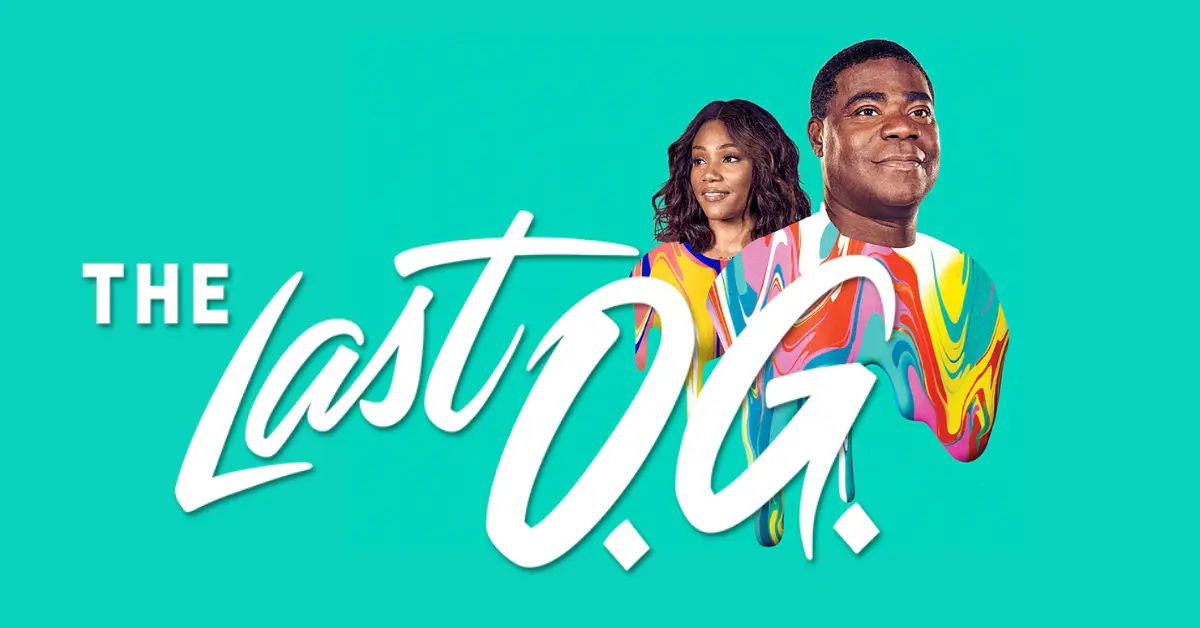The Last O.G.: A Cinematic Exploration of Recovery, Redemption and Mental Health
In today’s rapidly evolving entertainment landscape, few television series tackle the complex intersection of incarceration, reintegration, and mental health with the nuance and authenticity of The Last O.G. This comedy-drama stands as a powerful examination of how trauma, institutional systems, and community support impact psychological wellbeing. The show provides viewers with a unique lens through which to view the mental health challenges faced by formerly incarcerated individuals as they navigate their return to dramatically changed communities.
Thank you for reading this post, don't forget to subscribe!Basic Film Information
Title: The Last O.G.
Release Date & Production Year: April 3, 2018 (First episode)
Creator: Jordan Peele and John Carcieri
Director: Various ( including Jorma Taccone and Chioke Nassor )
Main Cast & Characters:
- Tracy Morgan as Tray Barker (a formerly incarcerated man readjusting to life outside)
- Tiffany Haddish as Shannon “Shay” Birkeland (Tray’s ex-girlfriend and mother of his children)
- Allen Maldonado as Cousin Bobby (Tray’s cousin who helps him adjust)
- Ryan Gaul as Josh (Shannon’s husband)
- Taylor Christian Mosby and Dante Hoagland as Amira and Shahzad (Tray’s teenage twins)
Genre: Comedy-drama
Awards won: NAACP Image Award nominations; Critics’ Choice Television Award nominations
Runtime & Rating: Approximately 30 minutes per episode; TV-MA
Plot Summary
General Overview
“The Last O.G.” follows Tray Barker, a man released from prison after serving a 15-year sentence for drug dealing. Upon returning to his Brooklyn neighborhood, he finds it completely gentrified and transformed beyond recognition. More shockingly, he discovers that his former girlfriend Shannon has married a white man named Josh and is raising their twins, whom Tray never knew existed. The series chronicles Tray’s attempts to adapt to his new reality, reconnect with his children, and build a legitimate life while staying in a halfway house.
Mental Health Themes
The series explores numerous mental health themes including:
- Post-incarceration adjustment disorder
- Identity crisis and loss of self
- Trauma from institutionalization
- Parental alienation and reconnection
- Community displacement and gentrification-induced stress
- Recovery and sobriety maintenance
Key Turning Points
Throughout the series, several pivotal moments highlight the mental health challenges Tray faces. His first encounter with his now-teenage children forces him to confront the years lost and the emotional void created by his absence. His attempts to find employment illustrate the systemic barriers facing formerly incarcerated individuals, contributing to depression and anxiety. His relationships with fellow halfway house residents showcase the importance of peer support in recovery.
Ending Analysis
As the series progresses, Tray gradually finds his footing in this new world. While the show doesn’t offer neat resolutions, it provides moments of hope as Tray establishes connections with his children, finds purpose through cooking (a skill he developed in prison), and begins to heal old wounds. The narrative emphasizes that recovery is not linear but rather a continuous journey of ups and downs.
Setting & Cinematic Techniques
Filming Locations
Set in Brooklyn, the series uses the rapidly gentrifying neighborhood as more than just a backdrop it becomes a character itself. The contrast between old Brooklyn (in flashbacks) and the new hipster-filled environment serves as a visual metaphor for Tray’s disorientation and sense of displacement. The halfway house represents a liminal space between incarceration and freedom, highlighting the transitional nature of Tray’s mental state.
Cinematography
The show employs distinct visual styles to differentiate between Tray’s past and present. Flashbacks to pre-incarceration times feature warmer tones and more dynamic camera movement, while scenes in the present often use cooler colors and more static framing to reflect Tray’s psychological adjustment. As Tray begins to find his place, the visual palette gradually warms, subtly tracking his emotional journey.
Sound & Music
The soundtrack skillfully blends old-school hip-hop that represents Tray’s past with contemporary sounds that signify the changed world he now inhabits. This musical contrast enhances the narrative of mental displacement and adaptation. Moments of emotional breakthrough are often accompanied by more intimate, stripped-down scores that allow the emotional weight of these scenes to resonate fully.
Acting & Character Portrayal
Lead Actor’s Performance
Tracy Morgan brings remarkable depth to Tray Barker, drawing from his own life experiences of trauma and recovery following his near-fatal traffic accident. Morgan’s performance balances humor with vulnerability, showing how Tray uses comedy as a coping mechanism while dealing with serious mental health challenges. His portrayal of a man struggling with identity after incarceration feels authentic rather than caricatured.
Supporting Cast
Tiffany Haddish delivers a nuanced performance as Shannon, a woman who has rebuilt her life in Tray’s absence, showing the complex emotions of someone who has moved forward yet still carries the weight of the past. The halfway house residents, each dealing with their own reintegration challenges, provide a crucial support network that illustrates the importance of community in mental health recovery.
Accuracy & Authenticity
“The Last O.G.” succeeds in portraying the psychological reality of reentry without sensationalizing or trivializing the experience. The show’s consultants included formerly incarcerated individuals who provided insights into the mental and emotional challenges of reintegration. This authenticity helps the series avoid common stereotypes about formerly incarcerated people.
Mental Health Representation: Strengths & Weaknesses
Psychological Accuracy
One of the show’s strengths is its portrayal of post-incarceration syndrome a cluster of behaviors similar to PTSD that many formerly incarcerated individuals experience. Tray exhibits hypervigilance, difficulty with everyday decisions, and challenges adapting to technological changes all documented symptoms. The series also accurately depicts how incarceration affects one’s sense of identity and autonomy.
Stigmatization vs. Awareness
“The Last O.G.” effectively challenges stereotypes by providing a humanizing portrait of formerly incarcerated individuals. It shows Tray’s struggles without defining him solely by his past mistakes, offering a counter-narrative to common media portrayals. However, the comedy format occasionally risks minimizing certain mental health challenges for the sake of humor.
Impact on Public Perception
By placing a formerly incarcerated Black man as the protagonist of his own story, the show helps normalize conversations about the mental health challenges faced by this often-marginalized population. Viewer feedback suggests the series has helped some audiences develop greater empathy and understanding for the psychological dimensions of reintegration.
Critical Reception & Awards
Critics’ Reviews
Critics have largely praised the show for its balanced approach to serious subject matter. The New York Times noted that “The Last O.G.” “finds humor in rehabilitation without making light of its importance.” Mental health advocates have commended the series for highlighting issues rarely discussed in mainstream television, particularly for Black communities.
Audience Reactions
Viewers with lived experience of incarceration or those working in prisoner reentry programs have noted the show’s relative accuracy in depicting the psychological challenges of reintegration. Community organizations have used episodes as discussion starters for conversations about mental health support for returning citizens.
Awards & Nominations
While the show has received nominations primarily for its performances and comedy writing, several mental health organizations have recognized its contribution to destigmatizing conversations about psychological well-being in previously incarcerated populations.
Cultural & Social Impact
Discussions Sparked
“The Last O.G.” has prompted important conversations about the mental health support systems (or lack thereof) available to formerly incarcerated individuals. The show highlights how inadequate preparation for reentry contributes to psychological distress and recidivism, calling attention to a critical gap in our social services.
Influence on Other Films
Since its debut, there has been a noticeable increase in productions exploring the psychological aspects of incarceration and reentry, suggesting that “The Last O.G.” has helped create space for these narratives. Its success demonstrates that audiences are receptive to stories that humanize rather than demonize formerly incarcerated individuals.
Mental Health Advocacy
The series has partnered with organizations focused on prison reform and reentry services for promotional events, helping to raise awareness about mental health resources for returning citizens. Cast members have spoken at events highlighting the psychological challenges faced by formerly incarcerated people.
Personal Reflection & Final Thoughts
“The Last O.G.” provides genuine insight into the psychological journey of reintegration by balancing humor with honesty. The series excels in showing how mental resilience can develop even in challenging circumstances, making it valuable viewing for anyone interested in understanding the psychological dimensions of incarceration and release.
I would recommend this show to someone struggling with similar challenges, as it offers hope without minimizing difficulties. It demonstrates that setbacks are part of recovery and that finding community support is essential. However, the series could improve its portrayal by delving deeper into the formal mental health interventions that can assist in the reintegration process.
Conclusion
“The Last O.G.” stands as a significant contribution to media representations of mental health in formerly incarcerated populations. By centering a Black man’s journey through the psychological landscape of reentry, it offers perspectives rarely seen in mainstream entertainment. The series reminds us that mental health challenges affect diverse populations in context-specific ways, and that recovery is both a personal and community endeavor.
What are your thoughts on how this series portrays the mental health aspects of reintegration after incarceration? Has watching “The Last O.G.” changed your perception of the psychological challenges facing returning citizens?

